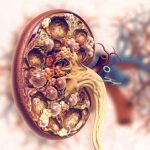Scars & Adhesions
Scars and adhesions stop the flow of energy, stress, and motion where they reside and abnormally displace these to other locations leading to pain and dysfunction in movement and stabilization. Often, the dysfunction can be far from the scar. A common scar that Dr. Hanson releases are those that occur after c-section surgeries. The skin becomes adhered to the underlying muscles, the three layers of muscles become adhered to each other, sometimes the deepest layer of muscles becomes adhered to the bladder. The net result of this process is abnormal stress, decreased local muscle function (abdominal stabilizers inhibited) and low back pain due to loss of stabilization.
Dr. Hanson is one of the only physicians with extensive experience treating these adherent lesions. He has developed procedural devices to use when necessary and adds the talents of other soft tissue workers to provide long-term normalization of tissue function and integrity. This subject affects nerve compression locally and ties into a much larger concept called fascial plane restoration. Fascia is perhaps the most important structural tissue in the body. It literally connects everything to everything. Thanks to a fellow provider, Dr. Brad Fullerton in Texas, Dr. Hanson has been working with fascia near areas of pain and degeneration for three years. It has helped restore normal tension, compression, nerve function, and motion around areas of pain and especially around previous surgery locations. It requires a great deal of patience to assess and treat optimally.
The most common agents used for treating scars and adhesions are local anesthetics and saline. On average, 1-2 injections are given over a three to six month period. Usual relief of pain can last two or more years depending on the severity of the scar or adhesion at the time of treatment.

